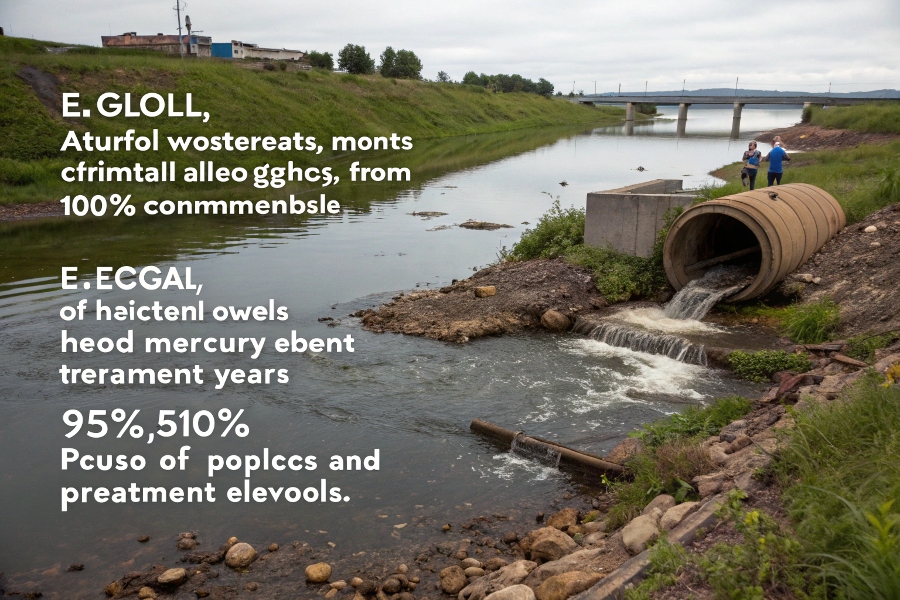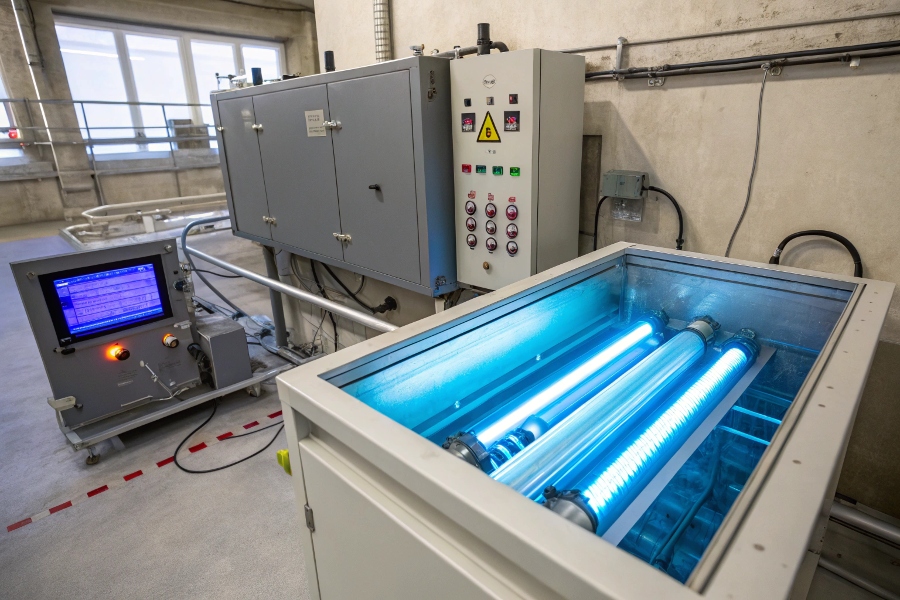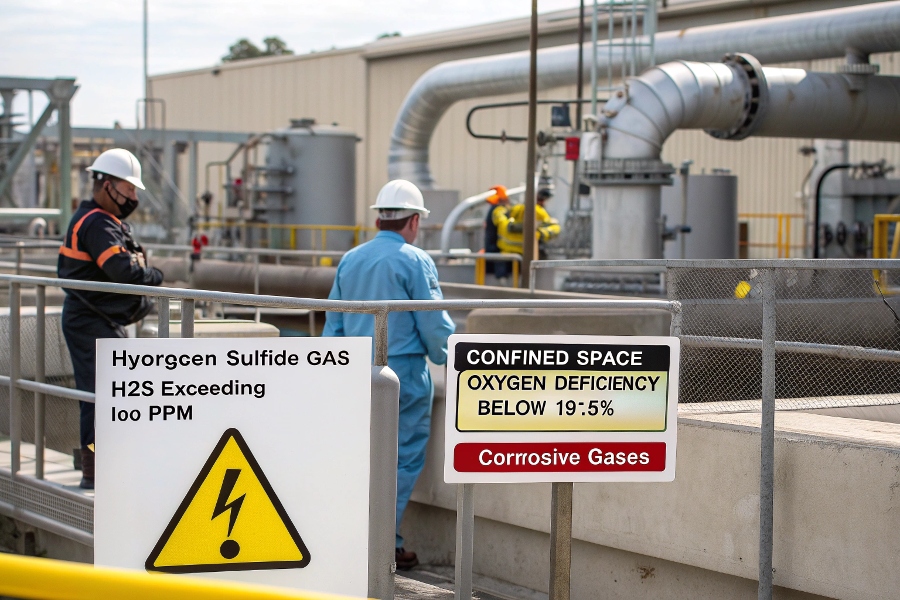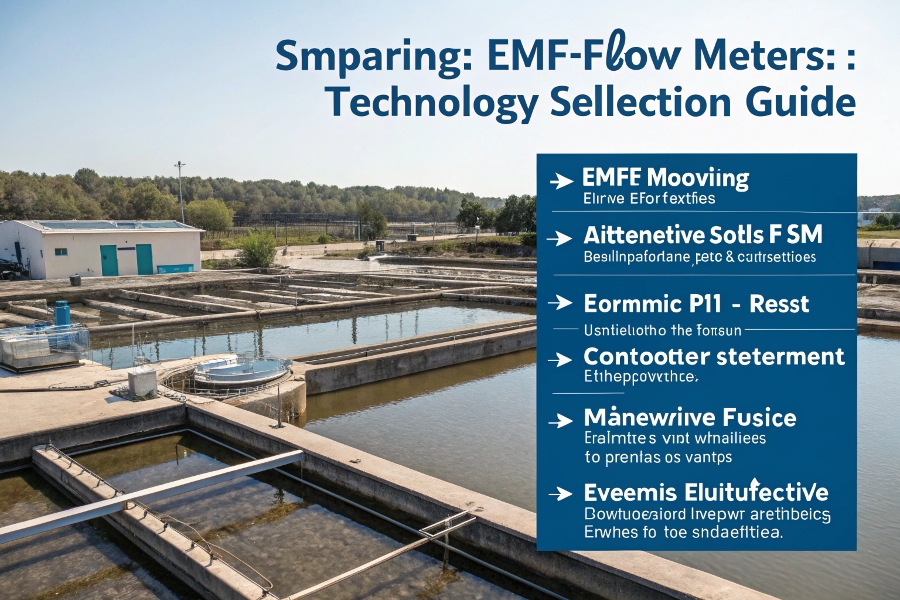Raw sewage contains over 1,000 harmful pathogens per milliliter. Without proper treatment, it poses severe environmental risks.
Electromagnetic flow meters (EMFs) enable accurate wastewater measurement using Faraday’s Law, providing non-contact monitoring through ceramic-lined tubes that resist corrosion from sewage’s harsh chemicals while maintaining ±0.5% accuracy in turbulent flows – critical for regulatory compliance and process control.

WWTP Process Flow
Let’s examine why EMFs outperform other technologies in this challenging application.
Why Is Wastewater Treatment1 an Environmental Health Concern?
Untreated sewage can devastate ecosystems within hours.
Raw wastewater carries disease-causing organisms (E.coli, cholera), toxic heavy metals (lead, mercury), and nutrient overloads causing algal blooms2. Proper treatment removes 95%+ contaminants before discharge, preventing waterborne illnesses3 affecting 1 billion people annually worldwide.

Contamination Impact
The treatment process addresses multiple hazards:
Wastewater Contaminant Categories
| Contaminant Type | Health Impact | Removal Method |
|---|---|---|
| Pathogens | Cholera/dysentery | UV disinfection4 |
| Organic matter | Oxygen depletion | Biological digestion |
| Nutrients | Algal blooms | Chemical precipitation |
| Pharmaceuticals | Hormone disruption | Activated carbon5 |
| Microplastics6 | Bioaccumulation | Membrane filtration |
Which Type of Electromagnetic Radiation Is Capable of Treating the Wastewater?
Not all radiation technologies work for wastewater.
Ultraviolet (UV-C) radiation at 254nm wavelength effectively disinfects wastewater by damaging microbial DNA. Modern WWTPs combine UV with EMF-monitored chemical dosing, achieving 99.9% pathogen kill rates without creating harmful disinfection byproducts like chlorine systems.

Disinfection Process
Radiation treatment options vary:
Wastewater Radiation Technologies Comparison
-
UV Systems (Most Common)
- Mercury lamps: 254nm output
- No chemical residuals
- 40-80 mJ/cm² dose required
-
Electron Beam (Emerging)
- High-energy electrons
- Breaks down pharmaceuticals
- 1-10kGy dose range
-
Gamma Radiation (Limited Use)
- Cobalt-60 sources
- Sludge sterilization
- Safety concerns
What Are the Three Major Safety Concerns in the Wastewater Treatment Industry?
Treatment plants contain hidden dangers.
Primary risks include: 1) Hydrogen sulfide gas (H₂S) exceeding 100ppm causes instant death, 2) Confined space oxygen deficiency below 19.5%, and 3) Equipment failures from corrosive gases – mitigated by EMFs’ explosion-proof designs and ATEX certification for hazardous areas.

WWTP Safety Hazards
Safety requires multiple layers:
Wastewater Risk Mitigation Strategies
| Hazard | Risk Level | Prevention Measure |
|---|---|---|
| Toxic gases | Immediate death | Continuous gas monitoring7 |
| Biological | Chronic illness | PPE protocols8 |
| Electrical | Fatal shock | Intrinsically safe EMFs |
| Structural | Collapse | Confined space permits |
| Chemical | Burns/explosion | Neutralization systems |
How to Select Flow Meters for Wastewater Treatment?
Not all flow technologies handle sewage well.
EMFs outperform alternatives in wastewater because: 1) No moving parts survive solids up to 5% concentration, 2) Ceramic liners resist pH 2-12 extremes, and 3) Grounding rings prevent signal noise from conductive impurities – providing reliable data for 7+ years with minimal maintenance.

Technology Selection Guide
Selection depends on application:
Wastewater Flow Meter Decision Matrix
| Application | Best Technology | Why EMFs Win |
|---|---|---|
| Raw sewage | Full-bore EMF | Handles rags/solids |
| Chemical dosing | Insertion EMF | Handles caustics |
| Sludge lines | Clamp-on EMF | No pipe taps |
| Final effluent | Magmeter | Low conductivity |
| Digestor gas | Thermal mass | Non-conductive |
EMF Installation Best Practices
Proper setup ensures decades of service.
Key steps: 1) Always install with 5D upstream/2D downstream straight runs, 2) Use grounding electrodes in concrete pipes, 3) Orient electrodes horizontally in slurry flows to prevent sediment buildup, and 4) Calibrate against manual measurements quarterly.
Conclusion
EMFs provide the reliability wastewater plants need – accurately measuring filthy flows while surviving chemical attacks that destroy lesser meters. Their non-intrusive design prevents maintenance hazards, making them the safest choice for monitoring our most critical environmental protection systems. Always specify ceramic-lined models for sewage applications, as standard rubber liners fail rapidly in abrasive waste streams.
-
Exploring this resource will provide insights into the advantages and innovations in wastewater treatment, crucial for environmental health. ↩
-
Discover the causes and consequences of algal blooms, which are directly linked to nutrient overloads from untreated wastewater. ↩
-
This link will help you understand the impact of waterborne illnesses on public health and the importance of effective wastewater treatment. ↩
-
Explore how UV disinfection works and its benefits in wastewater treatment, ensuring safe and effective pathogen removal. ↩
-
Discover the effectiveness of activated carbon in treating pharmaceuticals in wastewater, a crucial step for public health. ↩
-
Learn about the impact of microplastics on the environment and health, and the methods to remove them from wastewater. ↩
-
Learn about the critical role of continuous gas monitoring in preventing toxic gas hazards and ensuring worker safety. ↩
-
Discover essential PPE protocols that protect workers from biological hazards in wastewater environments, ensuring health and safety. ↩
